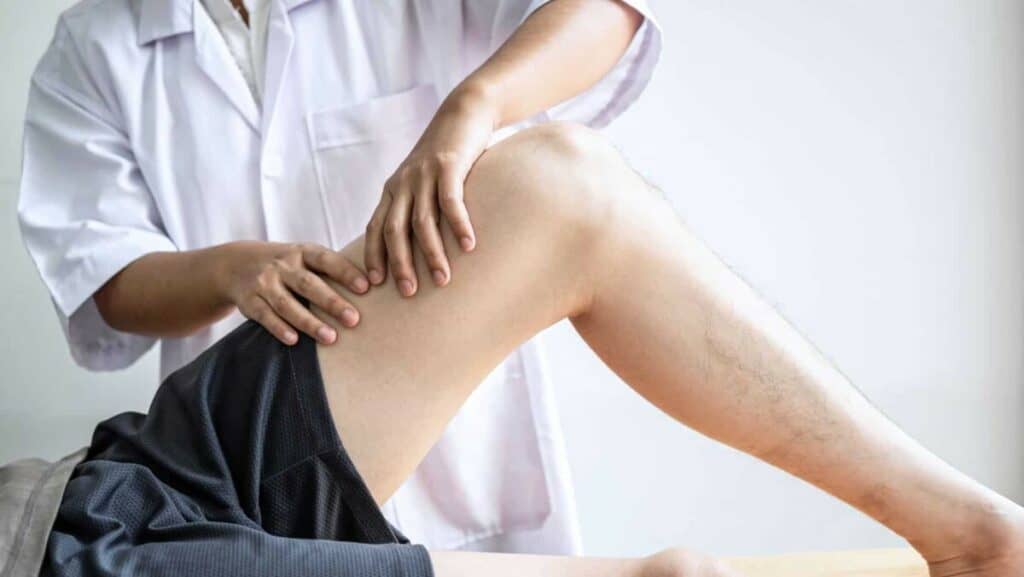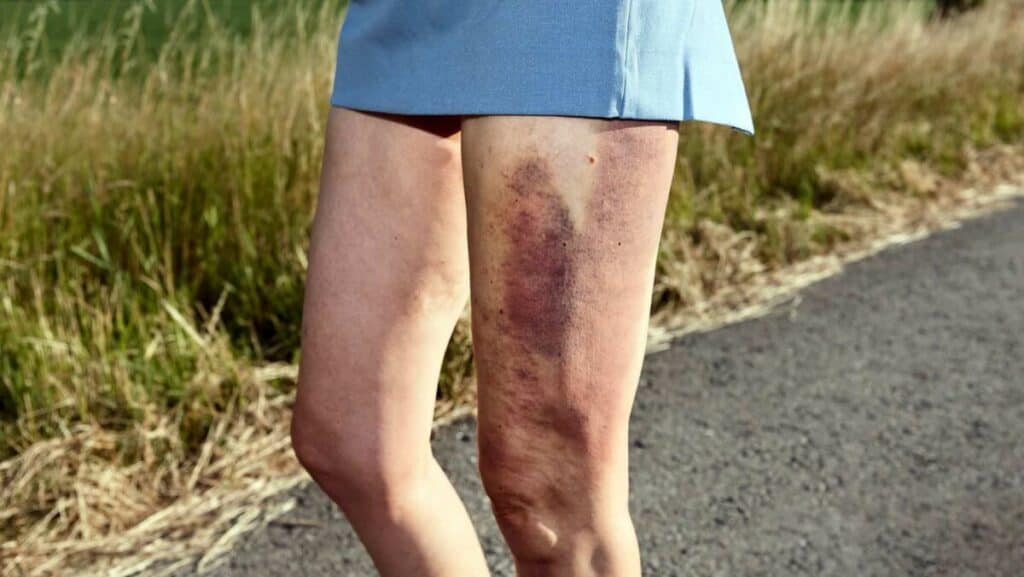Dead Leg
- Best Asics Shoes for Flat Feet - October 25, 2024
- Best Running Shoes for Flat Feet - October 22, 2024
- Posterior Tibial Tendonitis - October 21, 2024
What is a Dead Leg?
The Oxford Dictionary defines a dead leg as “an injury that occurs when somebody’s upper leg is hit by somebody else’s knee”. This is a relatively common injury in contact sports where two people might collide, and the impact is taken to the quadriceps muscle.
A Dead Leg can also occur due to a direct blow from a hard object, such as being hit or running into something solid. A dead leg is a contusion to the quadriceps muscle. The quadriceps muscle is impacted and compressed suddenly against the femur bone, causing damage to the muscle itself, as well as the nerves and blood vessels.
Symptoms
A dead leg will have a sudden onset as it is caused by trauma. The muscle will have sudden pain after the impact with a loss of power and strength in the leg, making it feel like it might or does give way. Therefore, weight bearing can be difficult and feel unstable. The muscle can feel like it is painfully cramping or in spasm.
In the short term, there might be a loss or change in the sensation down the leg as the nerves have been damaged. The extent of damage will affect the severity and duration of this altered sensation. Swelling can appear quickly and maybe a focal lump where the impact hit or a diffuse swelling in the muscle.
A symptom to develop later after the injury will be bruising, the extent of which will also depend on the severity of the injury, as well as the health of the individual and or whether they are taking blood thinning medication.
How to Get Rid of a Dead Leg
In the moments after injury, it may be possible to improve the symptoms or alleviate them entirely if the injury is very minor. “Shaking it off” or “running it off” will only work in very minor injuries.
For these cases, some movement of the leg, working the quadriceps muscle through its full range, by bending and straightening the leg may help. If this does not help or is painful, then you should stop, rest and seek professional advice.
Diagnosis
When seeking a diagnosis, you should go to a professional, either an experienced physical therapist or a sports doctor. A medical professional will perform a physical examination after taking your medical history and the injury details. The sensitivity over the injured area will be assessed with palpation, also looking for a palpable gap in the muscle suggestive of a tear.
The strength and mobility of the muscle will also be assessed to see what the deficit is compared to the other leg. This can be a helpful baseline from which to track the progress through recovery. Finally, for confirmation or clarification of the injury, an ultrasound scan can be performed. Ultrasound can show the extent of damage and the exact location.
It is essential to diagnose this injury correctly. A differential diagnosis is a tear in the quadriceps muscle, which requires a different management strategy than a Dead Leg.

Classification of a Dead Leg
Grade 1 – Mild
- Low or no pain at rest, low pain with quadriceps contraction
- Tension in thigh with minimal loss or range of movement
- Minimal bruising and swelling
- Slight antalgic gait pattern
- 2-3 weeks for recovery and return to play
Grade 2 – Moderate
- Moderate pain at rest and with quadriceps contraction
- Significant mobility reduction with pain to bend the knee
- Significant bruising and swelling
- Unable to walk without a limp
- 4-6 weeks for recovery and return to play
Grade 3 – Severe
- Severe pain at rest and with quadriceps contraction
- Very restricted mobility of the knee with severe pain
- Bruising and swelling throughout the thigh
- Unable to weight bear or walk unaided
- Palpable or possible visual deformity in muscle
- 2-3 months for recovery and return to play
How to Treat a Dead Leg
Treatment should be received quickly in the form of rest, ice, compression, and elevation to manage the extent of inflammation. Once the initial acute pain has settled, gentle rehabilitation can be started through mobility and strengthening exercises.
You should follow the advice and guidance of a professional to optimise your recovery and reduce the risk of complications such as myositis ossificans. Additionally, massage treatments can be helpful after the acute phase.
Myositis Ossificans
If not correctly managed and treated, a severe dead leg or contusion to the quadriceps can lead to myositis ossificans. This is the development of bone within the muscle. Calcification can occur in the injured muscle tissue, causing similar symptoms to a severe contusion injury.
That is severe pain to contract the muscle, swelling and bruising, loss of range of movement, and loss of power in the muscle. The difference will be that on palpation, a hardened lump may be felt, and on ultrasound, the calcification can be seen. In the worst cases, calcification can restrict blood and nerve supply and may need surgery.
_______________________________________________________________________
We are specialists in treating knee conditions such as a Dead Leg, and you can see one of our Sports Injury Physiotherapists in our clinic in Fulham, South West London.
We offer Online Appointments for £60 and Face-to-Face appointments for £85 in our clinics.
Related Articles
Stretching Before Running – Causes of Outer Hip Pain

